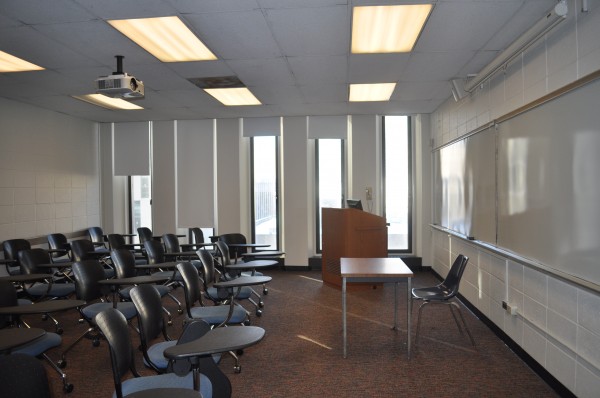The U.S. Must Address Its Education Problem
January 30, 2014

The state of public education in the United States is a well-known but often ignored issue. Sure, we have compelling documentaries, such as Davis Guggenheim’s “Waiting for ‘Superman,’” which unabashedly point out the dire state of our nation’s public schools (especially of schools in poor and urban areas), as well as detailed reports of 15 percent graduation rates in some of New York City’s worst schools, yet it seems as if the U.S.’ education problem is often swept under the rug or pushed to the back of our minds—even in the face of such telling evidence.
However, I’m hopeful that a recent study done by the Organisation for Economic Co-operation and Development (OECD) will finally give our nation’s leaders the push they need to make meaningful changes to our education system. The study not only details our country’s shortcomings in this area but also compares our system to the highly successful ones of countries such as Finland and Japan. If the people who have the power needed to once again make the U.S. competitive in a global market will not take action simply out of a sense of duty for struggling students and children, they will at least be able to see just how far we have fallen behind—and that’s a powerful motivation that cannot be easily ignored.
The OECD found that although problem-solving and technology skills were fairly similar across the countries studied, a mere 12 percent of U.S. adults score at the highest literacy levels and an even smaller 8 percent at the highest numeracy levels. Compare this to high-achieving Finland and Japan, where the percentage of adults performing at the highest levels of both literacy and numeracy is nearly twice that of the U.S. When you put that in the context of the world we live in today, where many people from different countries and different educational backgrounds come to work in the U.S., it’s not hard to see that in the average situation, a candidate coming from an American education would lose out to one coming from that of Japan, Finland or Australia, among others.
An even more chilling finding is that despite the fact that the U.S. has one of the highest proportions of adults with post-high school education, we still show widespread weaknesses in basic literacy, numeracy and technology/problem-solving skills. Obviously, this trend cannot be allowed to continue. As technology and business practices continue to grow more and more advanced over time, we need our students to grow at the same rate. We need programs in place at elementary schools, middle schools, high schools, community colleges and state universities that will stress these skills—especially in a modern day context—or else future generations of leaders and workers will continue to fall further and further behind. Of course, private schools and universities like Fordham should also stress these skills, and they don’t need to wait for the state to intervene in order to do so.
Fordham—more than many other liberal arts colleges—pushes students to be able to think and write critically across many different disciplines, and this aspect of the core curriculum is extremely beneficial to us in terms of honing the three key information processing skills. But even so, Fordham could stand to put more emphasis on teaching their students the kind of professional skills that they’ll need in the real world. While being well-rounded is very important, the core curriculum should not be centered only around that: it is a perfect platform for students to learn and excel at these skills, and, at the same time, to make themselves more competitive on the job market.
It is not enough, however, to just teach students these skills and call it a day. In the spirit of the OECD study, we must critically look at the differences between our own system and those of countries like Finland and Japan, whose educational systems have consistently ranked at the top, and which already have great models in place that we can borrow from. In Finland for example, high school students are taught at the same high level and held to the same high expectations, unlike in many of our high schools, where students are separated into different classrooms based on how ‘smart’ they are. To abolish such a system raises a great deal of concerns, among them the issue that not all students are at the same level and that grouping high-achieving and low-achieving ones into the same classroom would slow down the pace of learning, wouldn’t make sense or would be chaotic and so on and so forth. In the end, however, not only would educating all students at the highest level help to bridge the educational divide, these arguments are also meaningless in the face of providing all students—whether they’re determined to get all A’s or satisfied with C’s—with the same high-quality education. What they do with it is up to them, but the job of our schools and of our teachers should be to give them the skills and knowledge that they need to succeed.








